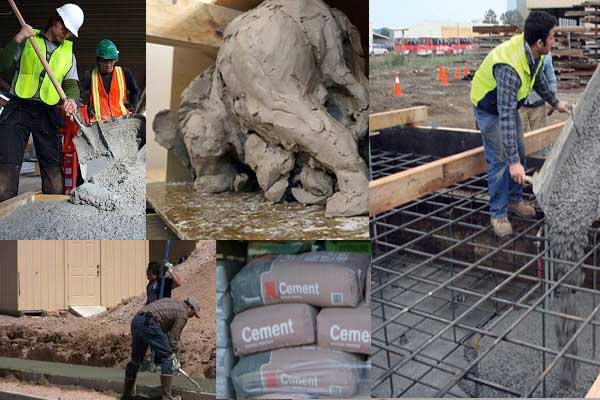
At present, the cement is widely used across the world in the construction of various engineering structures. It has proved to be one of the leading engineering material of modern times and has no rivals in production and applications. Cements may be used alone (i.e., “neat,” as grouting materials), but the normal use is in mortar and concrete in which the cement is mixed with inert material known as aggregate to form a strong binding material. Following are various possible applications or uses of cement:
- The most significant use of cement is production of concrete and mortar.
- Cement mortar can be used for masonry work, plaster, pointing, etc.
- Cement concrete can be used for laying floors, roofs, constructing lintels, beams, weather sheds, stairs, pillars, etc.
- It can be used for construction of important engineering structures such as bridges, culvert, dams, tunnels, storage reservoirs, light houses, docks, etc.
- It can also be used for construction of water tanks, tennis courts, septic tanks, lamp posts, roads, telephone cabins, etc.
- It can be used for making joints for drains, pipes, etc.
- It can be used for manufacturing precast pipes, garden seats, artistically designed urns, flower pots, dust bins, fencing posts, etc.
- It can be used for preparation of foundations, watertight floors, footpaths, etc.
- It can be used for creating fire-proof structures in the form of concrete. Also, it can be used for making acid-resistance and waterproof structures.
- Colored cement can be used for decorating or coloring the structures.
- It can be used for shotcreting the tunnel or geological walls to strength the structure.
Despite so many uses of cements, it has few demerits. However, its usability far overcomes its demerits. Some of the negatives of cement are as follows:
- Structure once build out of cement are difficult to be displaced or reused. They can’t be easily recycled like plastics or steels.
- Cement structure are very heavy. So, while building skyscrapers, it can’t be totally build on cement. Instead steel structures are placed.
